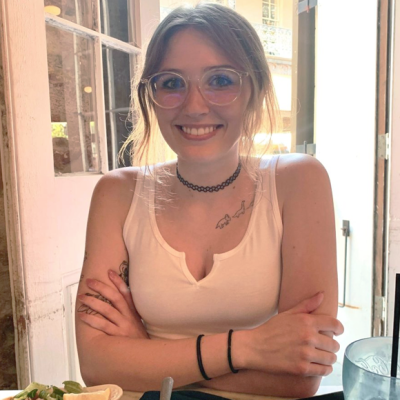What Can We Do About Climate Change? A Socratic Seminar in Biology
Samantha Andersen
- Disciplinary Literacy Skill: HS-LS2-7: Design, evaluate, and refine a solution for reducing the impacts of human activities on the environment and biodiversity.
- Critical Literacy Skill(s) (Lewison, Flint, & Sluys, 2002): Interrogating multiple viewpoints
- Instructional Resources Needed:
- “Every Place Has Its Own Climate Risk. What Is It Where You Live?” (Thompson, 2020)
- “What is Climate Change?” (Dunbar 2015)
- Graphic Organizer
Step-by Step-Instructions
- This lesson can be done over two days or the students can be given a chunk of class time before the seminar to answer these questions from this graphic organizer.
- I have provided two pieces of text for the students to read and look at before the seminar. “What is Climate Change” (Dunbar 2015) is an overview of the concept of climate change. “Every Place Has Its Own Climate Risk. What Is It Where You Live?” (Thompson, 2020) provides the students with a graph that displays the climate change risks that each county in the United States is facing. I will encourage students to take notes (taking notes requires students to employ their writing skills) over both of these readings and ask questions they might have had about climate change. I will also provide the questions beforehand on the graphic organizer so that the students have time to articulate their well-thought out responses for group discussion.
- I will organize the classroom to be in a circle where students are all facing each other. A large part of the Socratic seminar is students asking questions and formulating ideas to share with the class. The seminar is teacher-facilitated but largely focused on student’s conversations. Another option to allow each student to speak is to have the lesson be student-facilitated. Each student needs to speak. This is where my job or the student’s job as a facilitator is to call on students who might feel overpowered by those with louder voices or call on those who haven’t yet participated.
- To have the students analyze the data, I am going to ask questions about the graph from “Every Place Has Its Own Climate Risk. What Is It Where You Live?” (Thompson, 2020) As well as asking more open-ended questions that don’t necessarily have a solution. These questions require students to employ their critical thinking and problem solving skills. These questions are:
- What trends did you notice?
- What climate threat affects your area?
- What threat do you think is the most serious?
- What threats overlap?
- Have you seen other articles or videos about climate change?
- What else do you know is affected by climate change?
- What are you/your community doing to help climate change?
- What could be done to help these issues?
- Where do you think people will be affected the most? Who do you think will be affected the most? Why?
- Who is contributing to climate change? Why?
These questions are meant to get the students thinking about the graph and the data they saw. It also gets the conversations started, as each student might have different things that they noticed or were surprised about. The questions get students to use their classroom talk and listen to their peers.
- I want to facilitate discussion or have a student facilitate discussion and allow the students to formulate ideas and explanations with creative thinking. Science more often than not does not have one clear solution or one clear answer. I want to encourage that philosophy and promote multiple perspectives.
- I will tell each student to write notes on major points that are made during the collaboration. At the end, we will reflect over what was said and evaluate the ideas.
- I will collect the graphic organizer as an exit pass/participation in the seminar.
References
Dunbar, B. (2015, May 13). What is climate change? NASA. Retrieved September 10, 2022, from https://www.nasa.gov/audience/forstudents/k-4/stories/nasa-knows/what-is-climate-change-k4.html
Filkins, S. (n.d.). Socratic Seminars. Socratic Seminars | Read Write Think. Retrieved September 10,2022, from https://www.readwritethink.org/professional-development/strategy-guides/socratic-seminars
Next generation science standards. Next Generation Science Standards. (2022, August 11). Retrieved September 10, 2022, from https://www.nextgenscience.org/
Thompson, S. A., & Serkez, Y. (2020, September 18). Every place has its own climate risk. what is it where you live? The New York Times. Retrieved September 10, 2022, from https://www.nytimes.com/interactive/2020/09/18/opinion/wildfire-hurricane-climate.html


